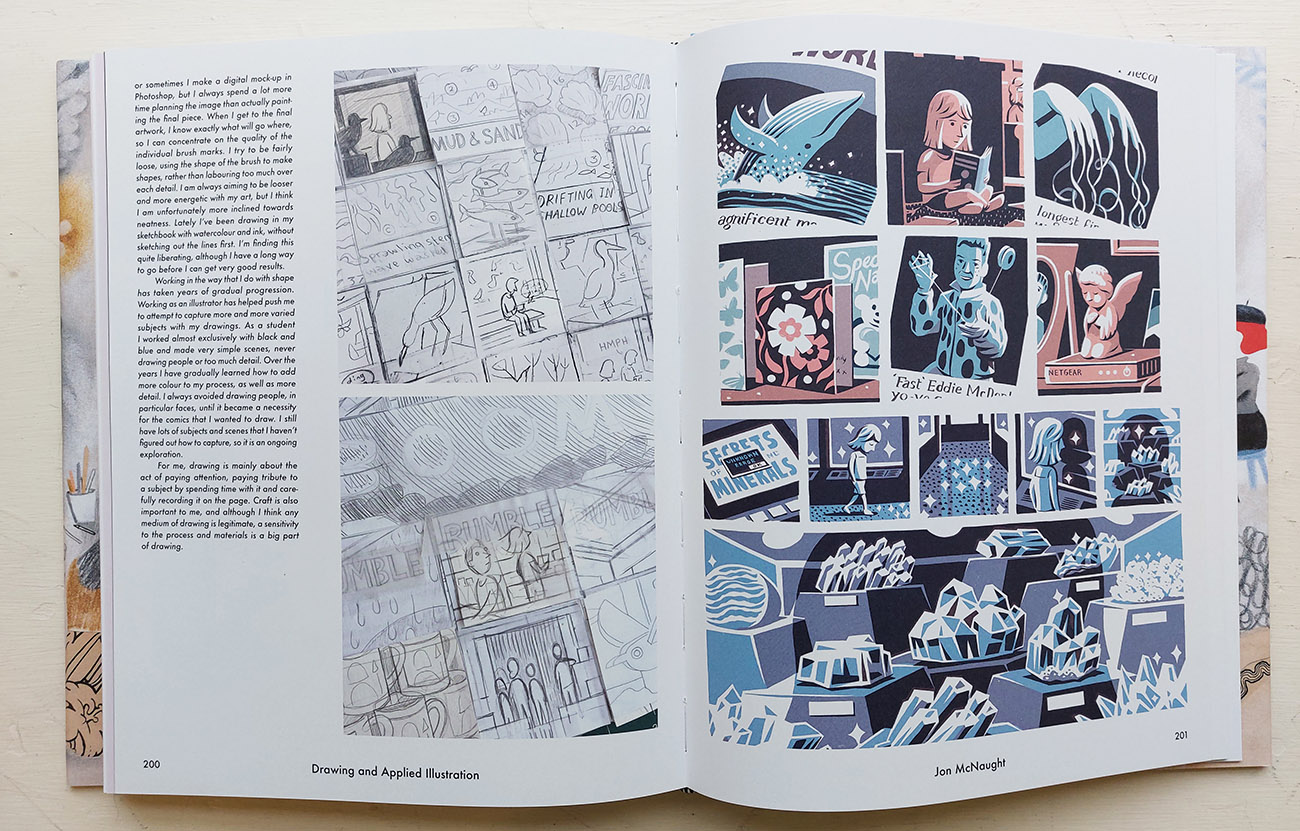By Martin Salisbury
Published by Thames & Hudson ISBN-13: 9780500023310
Review by Derek Brazell
“The making of bad drawings is a key component of the learning process”
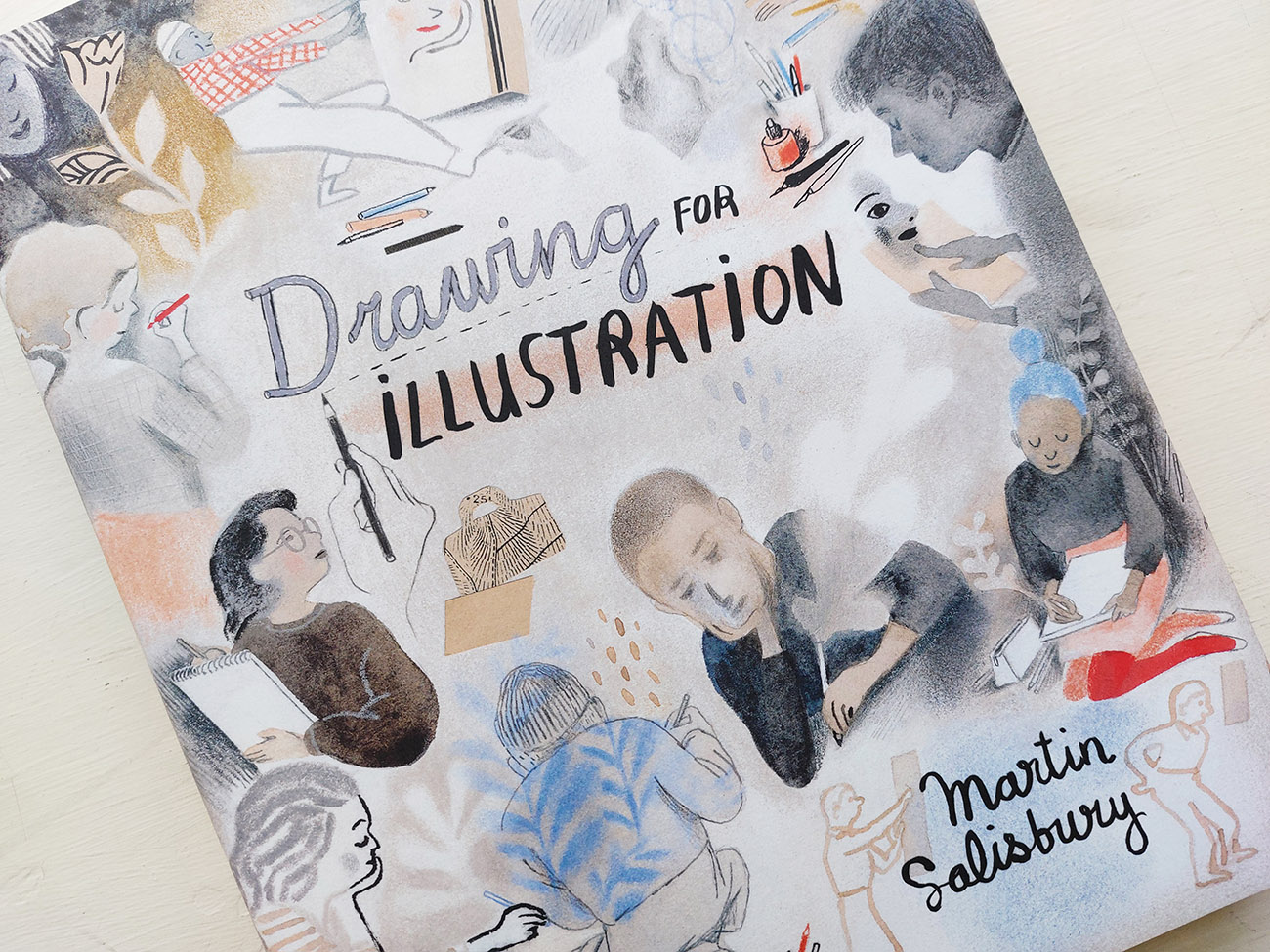
With an easy-to-read style, Martin Salisbury has created an attractive and useful book detailing that skill which most illustrators in the ‘About’ sections of their websites will say they have been into since they were small children: drawing.
Building a background to the subject, he offers practical advice throughout, along with facts such as how the print process would affect the way images were drawn for reproduction, and observations on the competing views on the benefits of observational drawing from renowned past illustrators, making a publication that engages those who have been drawing for some time, and those who are starting to really focus on it.
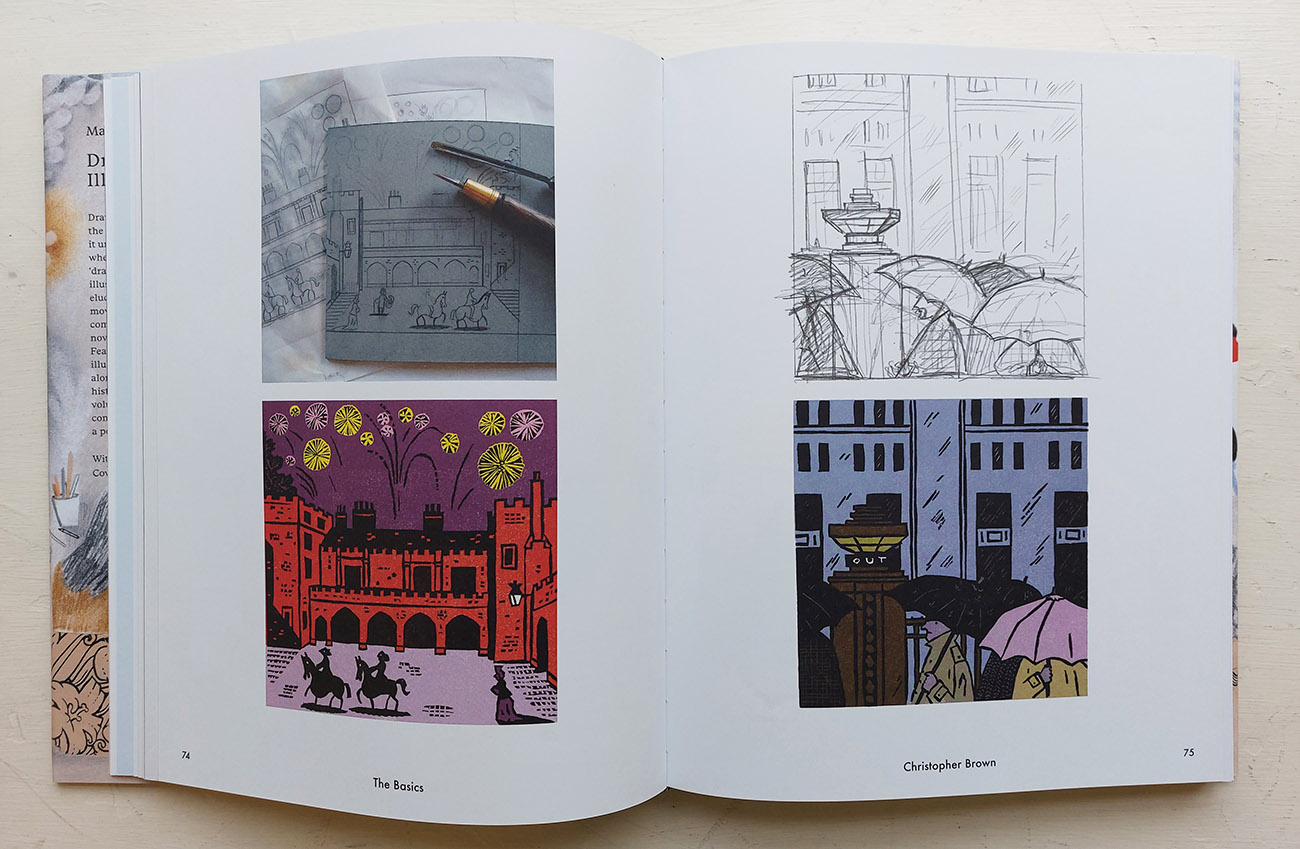
Without aiming to tightly pin down a definition of what drawing (and drawing for illustration) is, Salisbury – who is Professor of Illustration at Cambridge School of Art – comments that the process of drawing requires an intense ‘examining, exploring and questioning’ of the visual world, and that everyone will do this differently.
Equally, in defining what illustration is in the 2020s – ‘Imagery created, singly or in sequence, to be reproduced for mass visual communication via print or screen, with or without verbal text’ – Salisbury recognises that this definition may well date in time, as have previous descriptions of what the artform is. With a slightly amused tone, he lays out the ups and downs that have been the perception of the worth and artistic integrity of illustration. As we all know, it’s still here and as fantastic as ever, as evidenced by the beautifully curated set of sections focusing on an individual artist that are spread throughout the book.
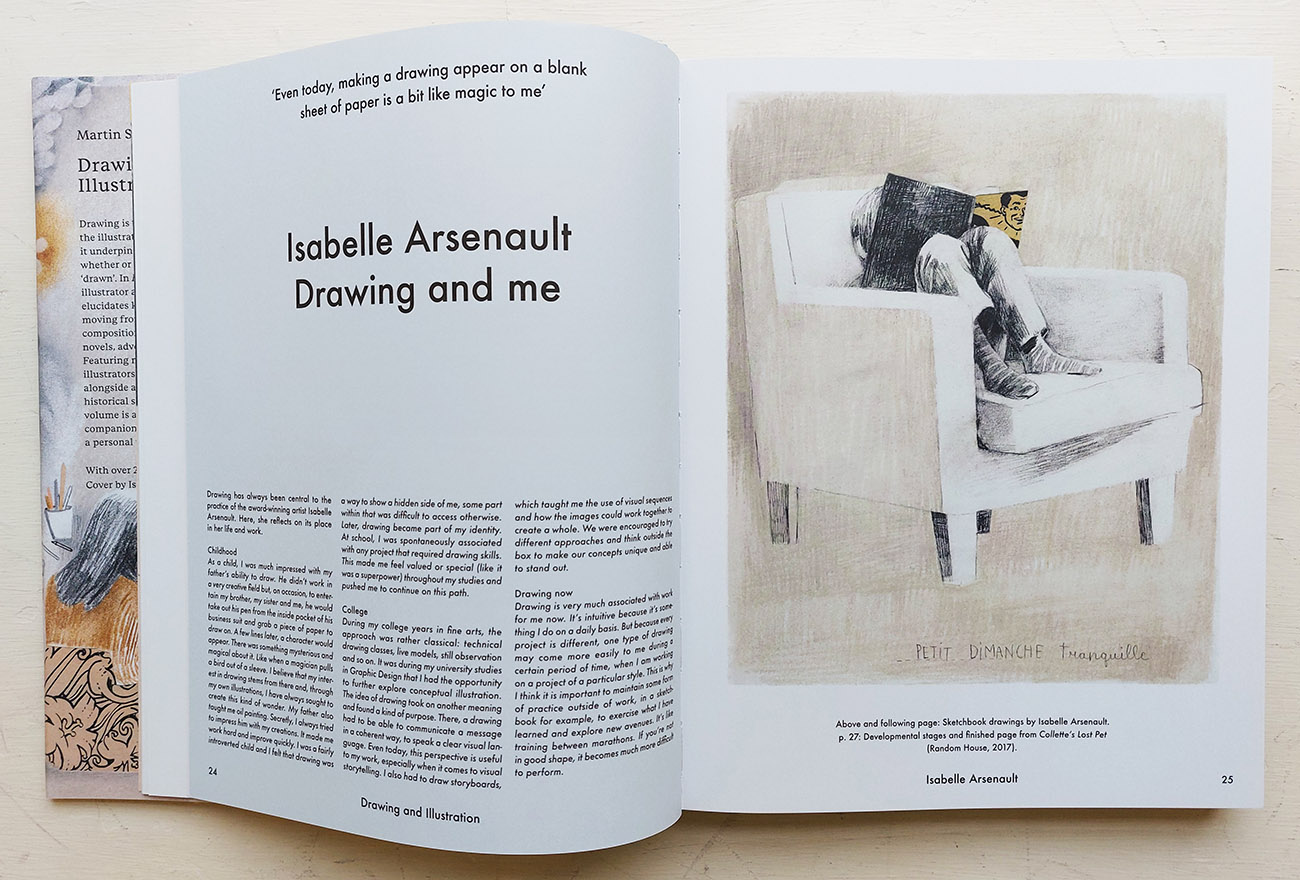
These illustrators reflect on their approach to drawing, with Isabelle Arsenault raising the important point about maintaining ‘some form of practice’ in drawing outside of commissioned work to help the artist adapt for each new commission if needed (and the examples of her work revealing subtle distinctions in her drawing approach). Yann Kebbi emphasises the benefit of not being too conformist in one’s artwork and ‘varying the techniques, scale, applications of context where my works could evolve’. All the interviewed illustrators offer intriguing insights into their relationship with drawing and their work as an illustrator, all with a unique approach in terms of what it means for them.
The ability to ‘see’ as an artist is discussed in a teaching context and also through ongoing examination of the pronouncements of illustrators from the past with differing views on the benefits of drawing from observation.
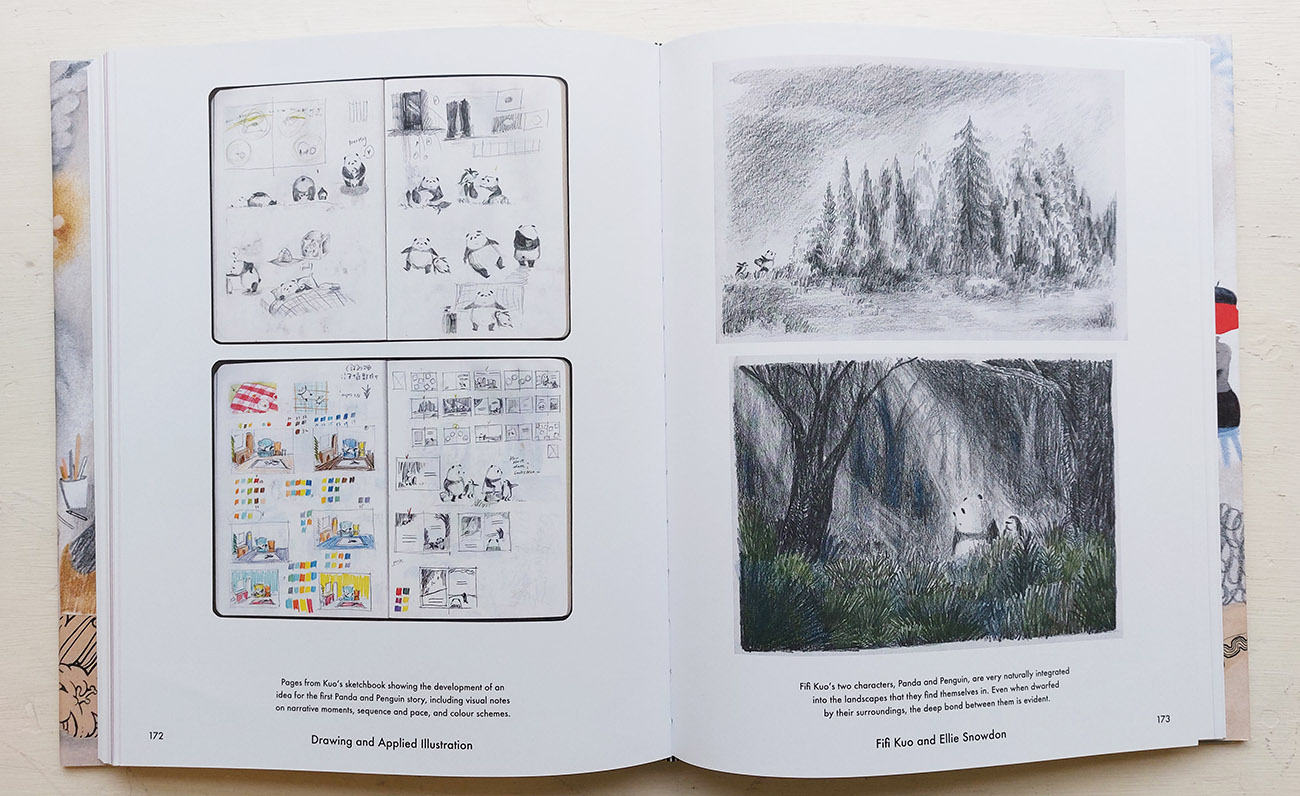
The book’s ‘Basics’ section speaks to students embarking on a focus on drawing, covering the importance of the ‘line’, composition and structure, drawing and colour, plus more. Each with great examples, including some of Salisbury’s own artwork, and while inspiring those new to the game these act as reminders to those who have drawn a lot but don’t take it up so frequently currently to maybe get back to it.
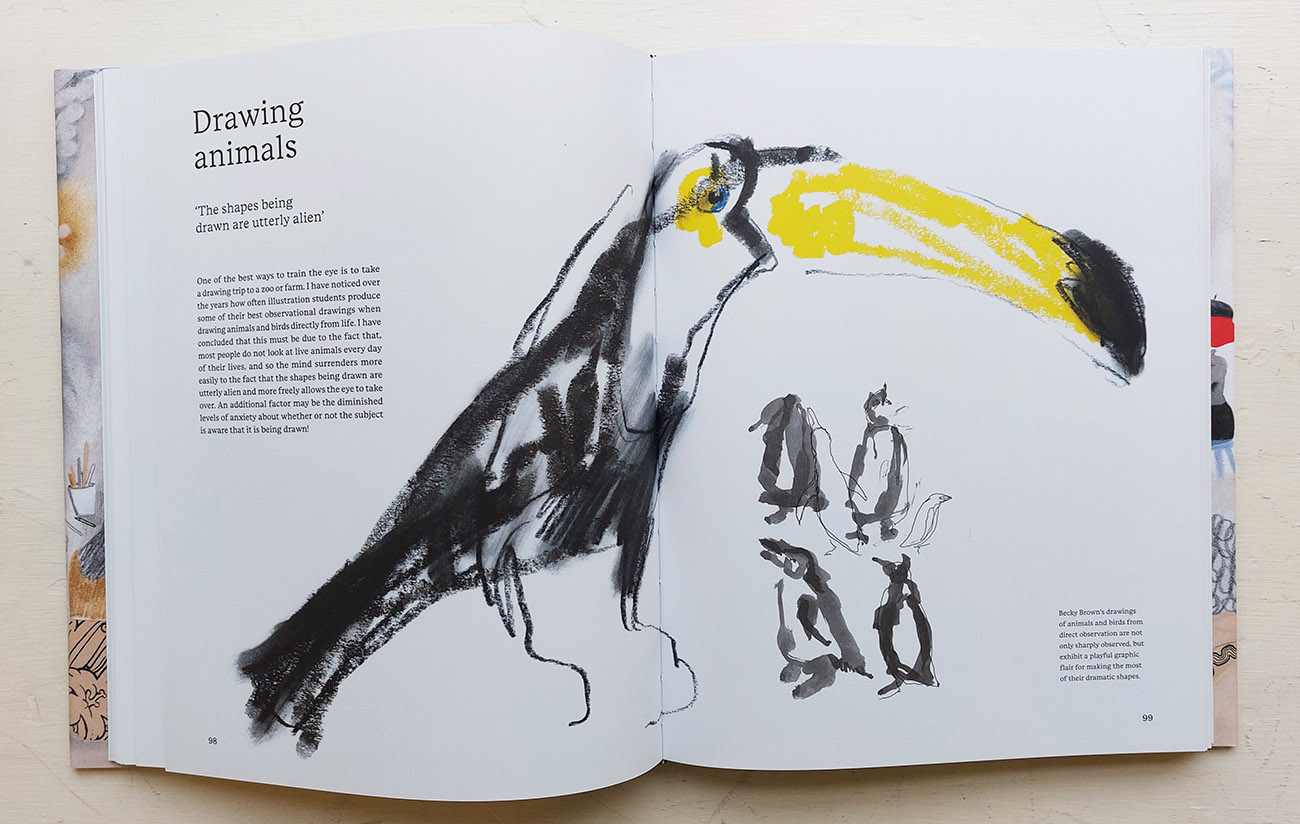
Salisbury makes the link between observational drawing and how it will feed into images also formed by the imagination through putting ‘what you think and feel as well as what you see’ into the drawing. And of course, the sketchbook, as the place where drawings of all types are born, is featured and described as the ‘key to progress’ and an essential for students to utilise.
The final chapter explores the ‘diverse and wide-ranging application of drawing to applied illustration’, through short texts covering editorial, picture books, character development, reportage and more, giving a good general introduction to theses aspects of drawing backed with effective examples and further interviews with illustrators including Isabel Greenberg and AOI Patron, David Hughes.
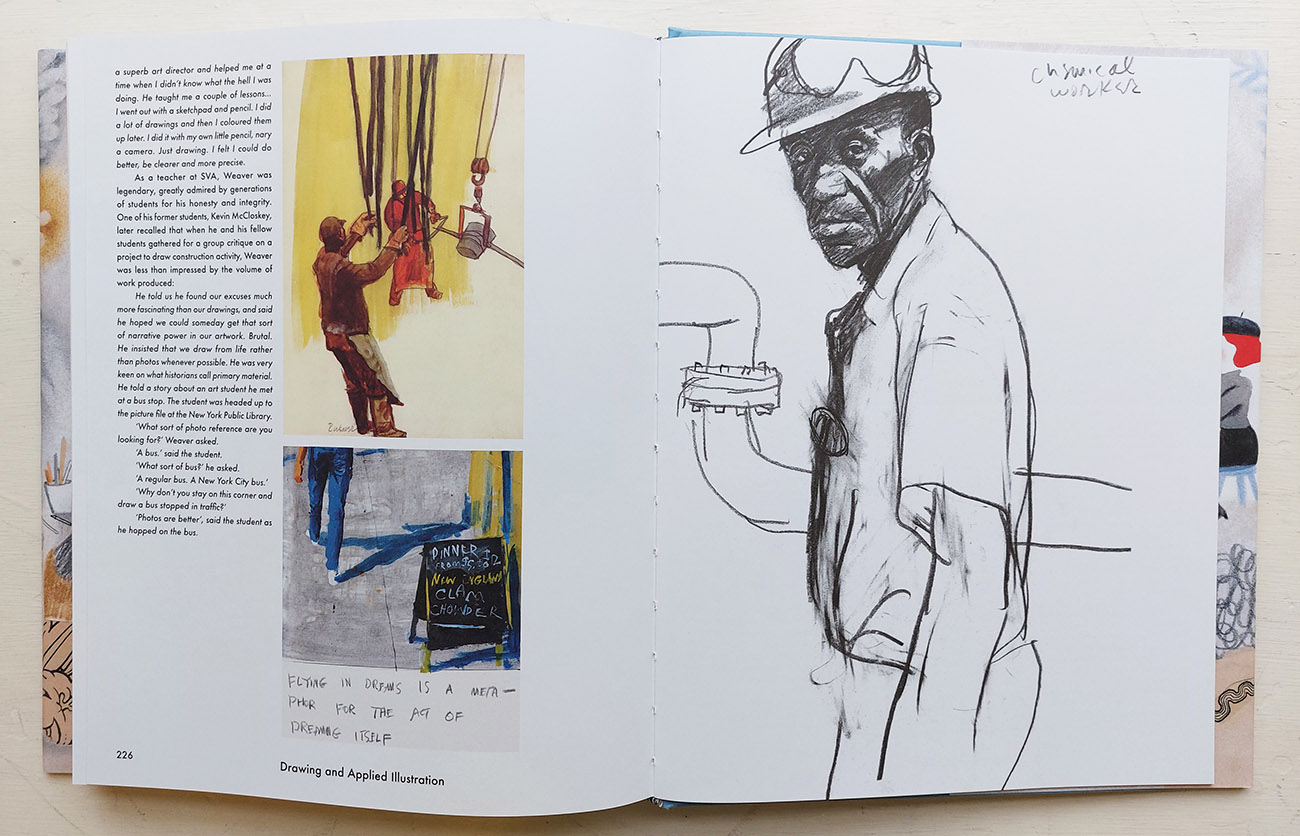
Kerry Lemon sums the up what the joy of drawing can be in her section on scaling drawing up to hoarding size, “It is my very favourite thing to do”. This book will surely encourage others to feel the same.
